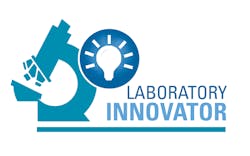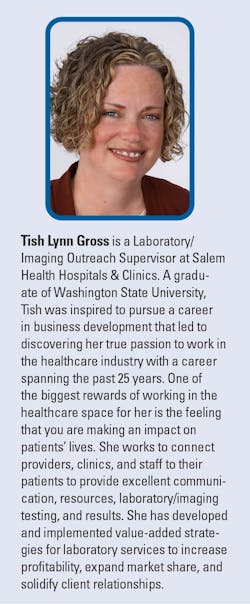Leading the lab in provider and patient satisfaction
Salem Health Laboratories recently replaced its laboratory information system (LIS). What improvements in lab operations have you seen as a result?
Our new LIS is the lab application of our organization’s electronic medical record system; this has aligned our systems across all departments. With this LIS implementation, we were able to streamline and align our workflows throughout all our laboratories. The new LIS has provided continuity for all our teams and has improved the services we provide. With our new system we have added a client relations module, which has improved the customer experience. We also added integrated positive patient identification (PPID), which has improved our compliance with collection information. This implementation has been hard work and a learning curve for all our teams. Now that we have been live for nine months, we have identified enhancements that will improve our system and we are beginning that work.
What is the current vacancy rate at your lab? What strategies have you found to be successful in recruiting and/or retaining staff?
Our lab vacancy rate currently is 6%. In partnership with our recruiting team, hiring supervisors, and managers, we have utilized career fairs, connections with school programs bringing in student interns, referral bonuses, and meet-the-employer sessions at local learning institutions for recruitment. New this year, we began a partnership with an online MLS program by providing clinical and training experience right here in our laboratories, and we have opened this opportunity up to our own staff. We have had a lot of interest. This investment in our team has improved morale. Employee retention is always a focus of our organization, and we continually do market analysis to ensure we are providing competitive wages and benefits — just recently we implemented increases across the organization and zero cost insurance premiums.
What is the most exciting new technology being used in your laboratories?
We launched viscoelastic testing to improve our ability to provide the right therapy for patients and reduce the overall blood product use when managing bleeding events associated with cardiovascular surgery. The improvements from targeted therapy will reduce blood product use overall. This will allow Salem Health to better utilize the precious resource of donated blood and reduce overall cost of care. Whole blood is currently playing a pivotal role in our organization. It is being utilized to provide essential care to patients requiring substantial quantities of blood components, particularly those who have experienced severe blood loss due to traumatic injuries. One of the key advantages of incorporating whole blood into our mass transfusion protocol (MTP) is its immediate usability and its ability to provide a balanced component approach with 1-1-1 ratio.
Salem Health is finalizing the addition of molecular HSV-1, HSV-2 testing to our local menu to support our pediatric patients. By adding this testing to our in-house test menu, we will be able to get our newborns off of prophylactic treatment more quickly leading to improved patient care and more timely discharges.
Would you please elaborate on the value-added strategies that you have developed and implemented for your laboratories’ services.
I have led the team for implementation of interface integration with our outpatient clinics’ EMR systems, working with a third-party vendor for lab and imaging orders bi-directional interface. Some of the benefits of this project include transmittal of orders for imaging and lab directly from the clinic EMR to ours, reduction of transcription and interpretation errors, receipt of results directly into clinics’ EMR systems, and the ability to interact with results in real time to help providers and staff manage patient care. As an outreach tool, our interface project with outpatient clinics is very beneficial to providers and has increased our volume as such. We have implemented our interface so far this year to 250+ providers and 35 clinics and are currently onboarding 5 clinics with collectively 26 providers.
What are Salem Health Laboratories’ biggest challenges?
As an organization, Salem Health, like many others here in Oregon and nationally, faces challenges like staffing, length of stay, and increased costs associated with hospital care. Facing these challenges in the lab is no different but we forge ahead. We are expanding (not downsizing) by increasing staff, investing in the future with new and innovative instrumentation including our interface offerings, investing in telehealth, new testing, and focusing on outreach. We are also learning how we can grow our reach into communities not just within the area around our hospitals and clinics. For example, we have become a certified lab organization with an EMR company that services our skilled nursing facilities and care homes to provide more streamlined results to providers and care givers.


